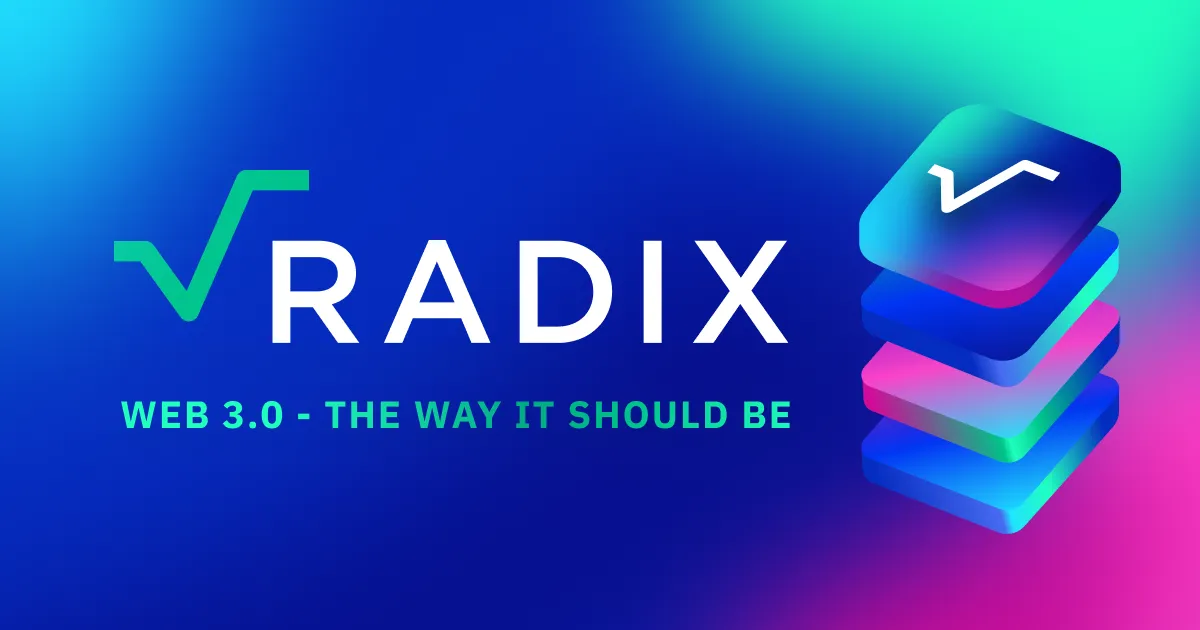
If you tuned into this week's Mondays With Maya Twitter Space, you might have heard the announcement of Leo getting listed on Maya protocol.
You might have also heard Piers Ridyard, CEO of RDX Works talk about Radix. But what exactly is Radix?

Radix is an L1 blockchain that aims to revolutionize DeFi. As, Piers puts it
If blockchain is going to be the new financial layer for the world, we must rethink the architecture so it can scale and developers need to be able to easily build on top of it.
When Ethereum came out, the concept of smart contracts was truly revolutionary, but perhaps growing the Ethereum ecosystem to a global scale was not exactly in view, which means that today we have a mismatch between Ethereum's technological capabilities and market needs.
To illustrate this point, let's look at Radix's view of how Uniswap should work and how it actually works:

Not only is the tech complex, but building in the Ethereum ecosystem means learning Solidity as a programming language, a language that has a steep learning curve even for straightforward tasks like creating a token.
Scrypto, Radix's programming language
Scrypto is a programming language based on Rust and it more closely aligns with the platform's asset-oriented paradigm. The Radix team spend about two years working with DeFi developers to build a programing language that allowed them to build complex functionality but was also easy to get started with which is why (according to Piers) there are things being built on Radix that doesn't even exist yet on Ethereum. And part of the problem platforms are encountering is that it's difficult to find developers who are good enough in Solidity to build secure DeFi applications.
Royalties for developers
This is a new concept to me. It's a system that incentivizes developers to contribute to the ecosystem. In stead of apps in an app store where users pay a one-time fee for access, royalties on Radix are paid out to developers on a per-transaction basis, which ensures that the tools that have the most utility in the ecosystem are the ones that are more highly rewarded.
Radix consensus mechanism, Cerberus
As mentioned above, the limitations of Ethereum's current architecture for DeFi are starting to show.
Cerberus, as Piers explains it, takes a well-proven “single-pipe” BFT (Byzantine Fault Tolerance) consensus process and parallelizes it across an extensive set of instances or shards; 2^256 shards to be exact or...
115 quattuorvigintillion 792 trevigintillion 89 duovigintillion 237 unvigintillion 316 vigintillion 195 novemdecillion 423 octodecillion 570 septendecillion 985 sexdecillion 8 quindecillion 687 quattuordecillion 907 tredecillion 853 duodecillion 269 undecillion 984 decillion 665 nonillion 640 octillion 564 septillion 39 sextillion 457 quintillion 584 quadrillion 7 trillion 913 billion 129 million 639 thousand 936
(yes, I looked it up)
Here's a pretty cool video I found that helps you visualize just how incredible 2^256 is
So anyway, instead of simply focusing on transactions per second (TPS), Cerberus understands cross-sharding, it actually incorporates atomic composability and dynamic sharding to put transactions into buckets, where the things that are related happen on the same shard and the things that are unrelated always happen on different shards. This synchronization of consensus across shards means that Cerberus can achieve infinite “linear” scalability, in other words, as more nodes are added to the Radix Network, throughput increases linearly.
So...
Cerberus is the only consensus protocol that is capable of supporting the global financial system on a decentralized network.
Radix Engine
Radix Engine is equivalent to the Ethereum Virtual Machine (EVM) which runs smart contracts on Ethereum. The Ethereum network provides a shared environment that can perform computation using code that a developer deploys to the network. Each smart contract has its own space where it can store some data that the smart contract logic can update, like this:
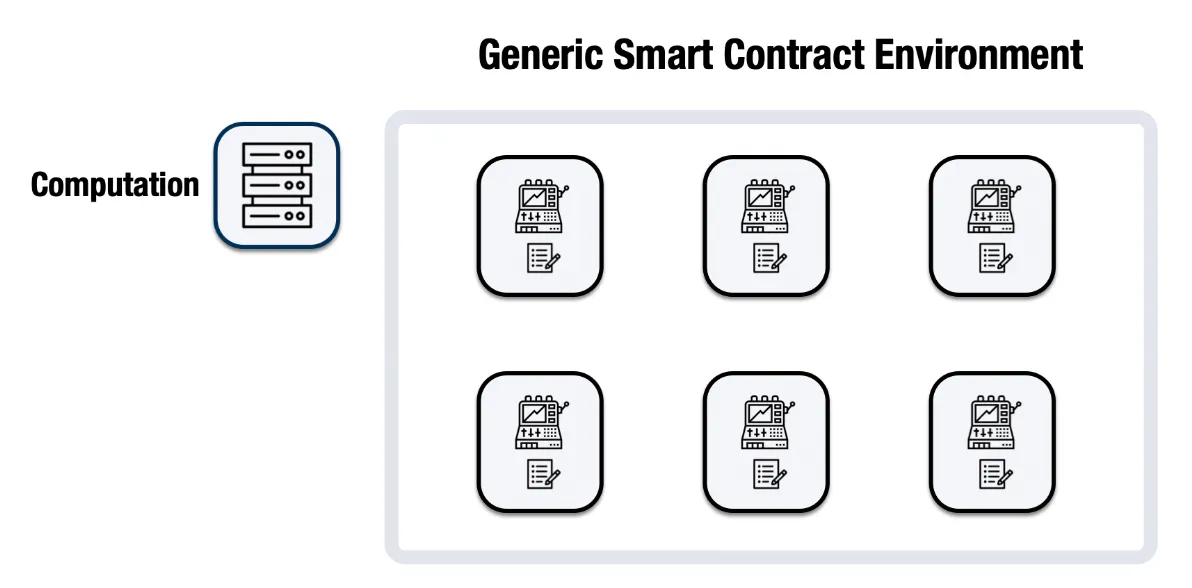
In the above model, we could think of one box being a token, a smart contract that keeps track of a list of balances associated with a list of public keys. Another box could be a DeFi dApp, etc.
Now these smart contracts also need to communicate with each other, so the application environment, the Ethereum Virtual Machine (EVM) allows this to happen. You can think of the EVM machine as a telephone grid that makes communication possible
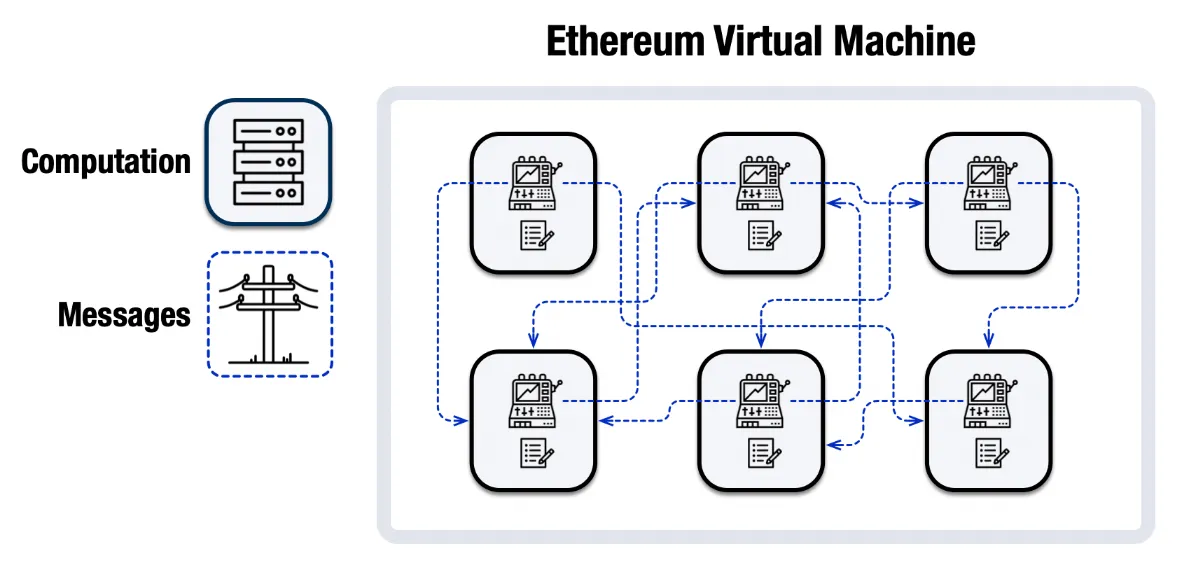
Now because EVERYTHING on Ethereum is a smart contract, you can now see how sending millions of messages simultaneously can limit scalability.
Radix Engine v1, which is currently operating, takes a different approach. It has enshrined a bunch of functionality directly onto the ledger, so instead of having to build a smart contract to create a token, or NFT, developers have the ability to declare to the ledger what kind of token they want and fill in a few parameters, that token will appear and that token is now accessible by any wallet instantaneously.
The Radix wallet
The Radix wallet I'm checking out now, I'll update this section once I've played around with it a bit more, but basically, they've focused on creating a nice user interface with good user experience that not only allows you to manage assets on your mobile device, it also allows you to connect to DeFi applications on your desktop through a secure p2p connection between your computer and your phone that allows you to interact with dapps on your desktop.
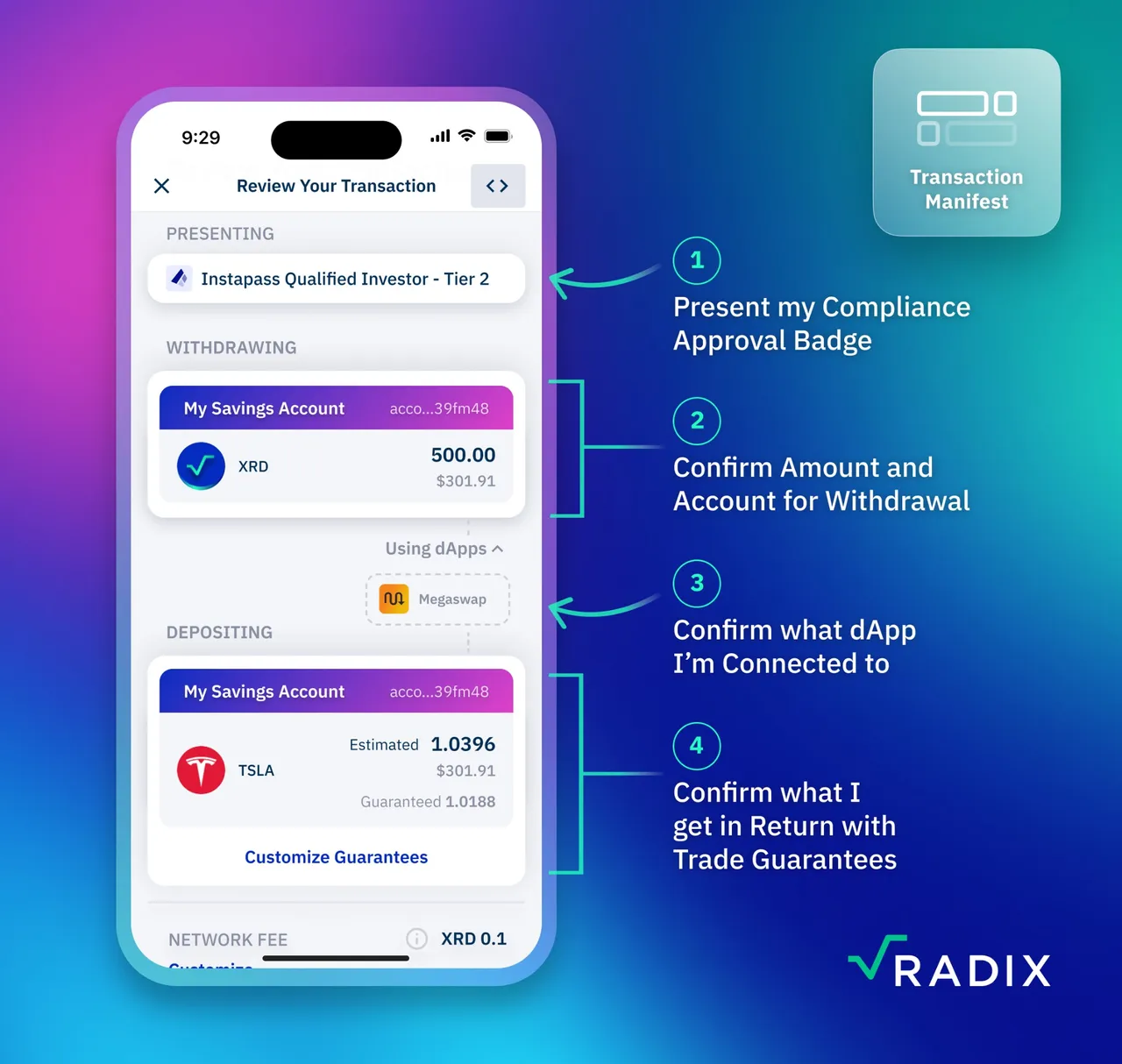
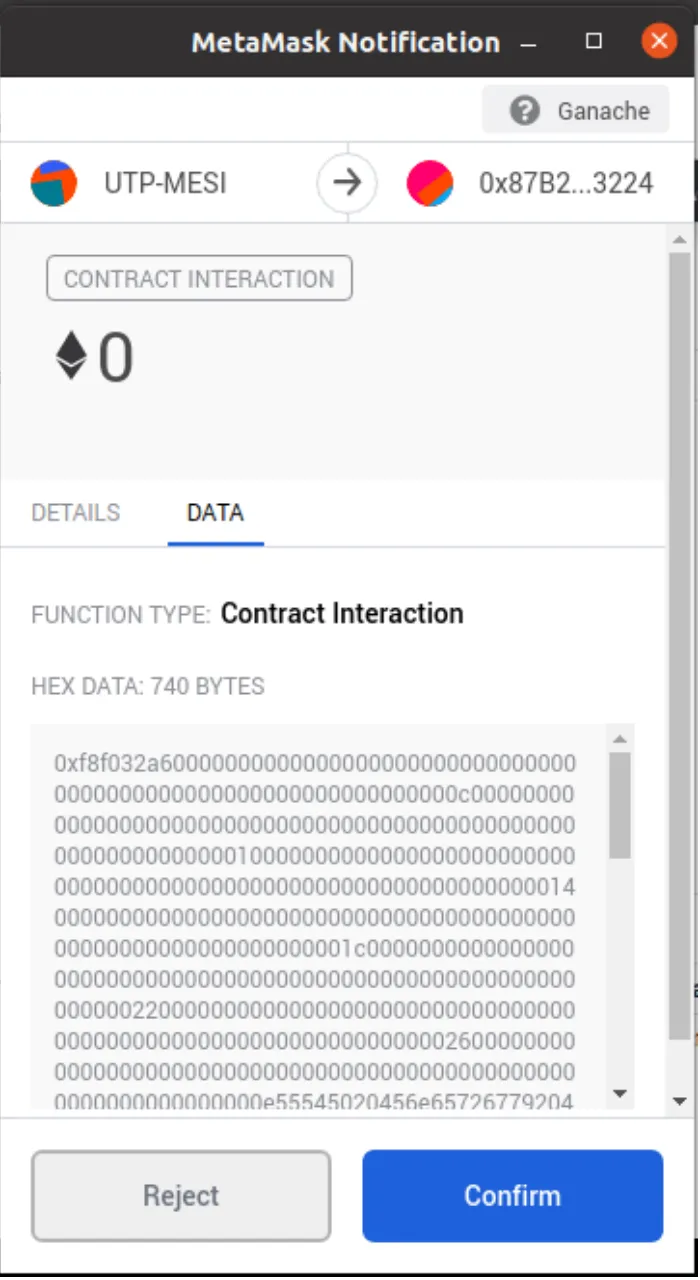
So this transaction manifest is pretty cool feature if you ask me.
It's the first time I'd really paid any attention to Radix, but all in all, the technology seems interesting and worth taking a look at.
If the vision of worldwide adoption of web3 and real-world asset tokenization are to be realized, we have to be realistic and accept that doing things with Ethereum and its layer 2s is not going to allow that to happen.
We need networks that are very secure, much easier to use, and give developers the framework to build what the want.
Like I said, I don't know if Radix is it, but it's worth taking a look at.
I'd love to read your comments on Radix.
